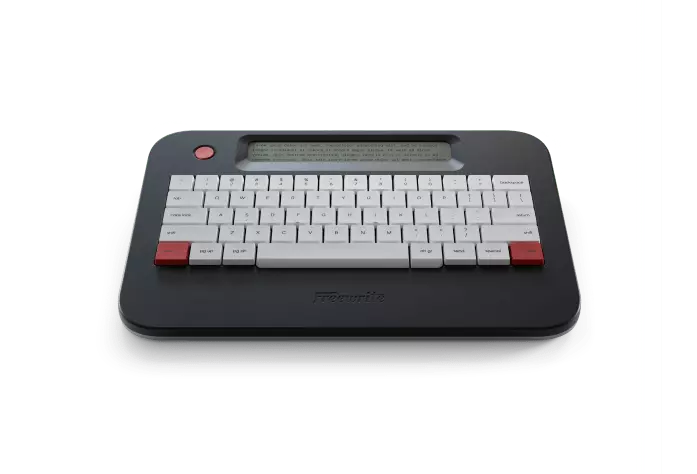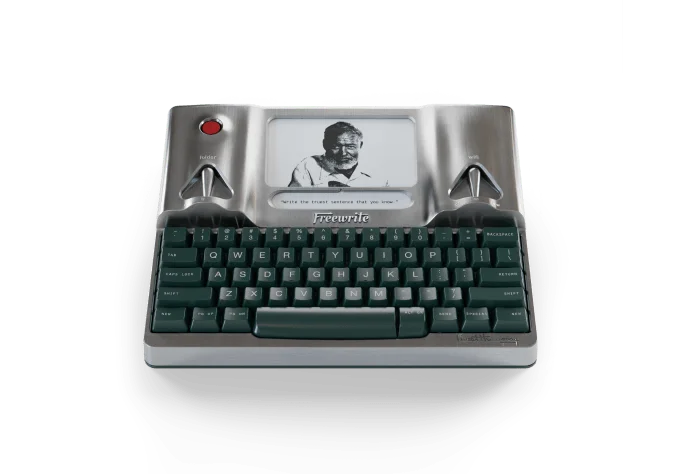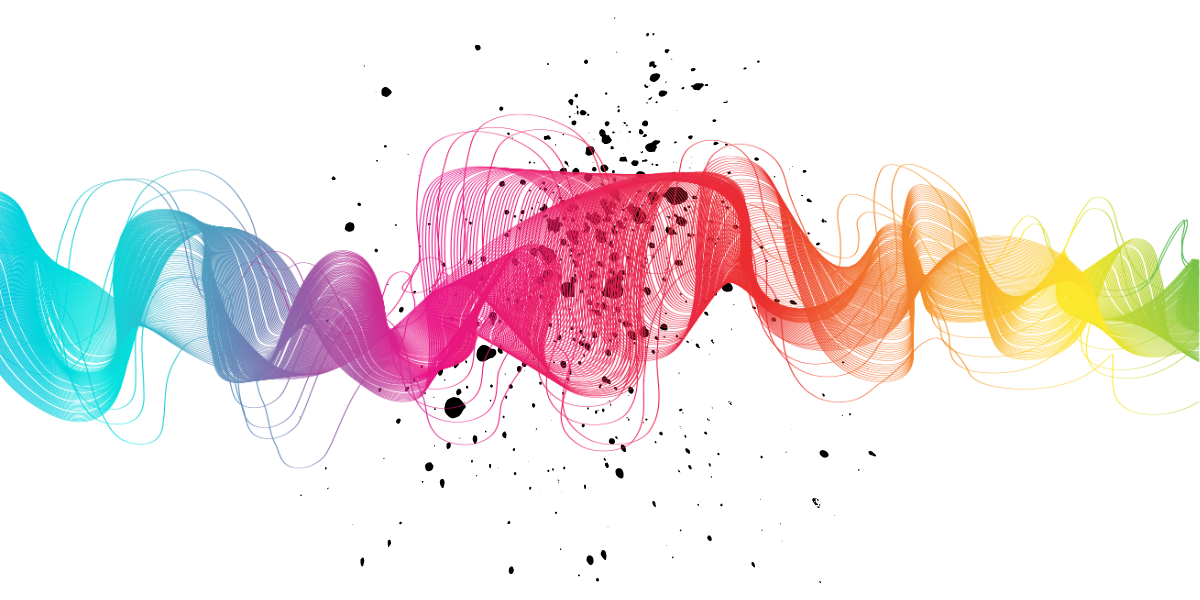Some writers find that producing authentic-sounding dialogue comes naturally to them. For a much larger majority, however, mastering the art of dialogue is something that takes a lot of time, effort and experimentation. Even if you find it easy to write passages of dialogue, that doesn’t mean that you’re getting it right. There’s more to mastering dialogue than being able to fill page after page with your characters’ conversations.
That’s a lesson that I learned the hard way. I wasn’t fazed by writing dialogue - in fact, I actually enjoyed it - but I didn’t get the balance right, and my writing suffered as a result. My first novels and short stories were full of long passages of, well, meaningless dialogue that didn’t really move the story along. When I went back, several years later, to rewrite those initial books, I cut one manuscript from 120,000 words to 89,000 words, just by tightening up my dialogue.
In this article, part of a series on developing and strengthening your writing techniques, we’re going to be looking at 3 of the common dialogue mistakes that writers make and discovering how you can master the art of dialogue by practicing 3 (relatively) simple methods. I can’t promise to make you love writing dialogue, but I can help you to exercise your dialogue-writing muscles in a productive way.
Why is it So Important to Get Your Dialogue Right?

Dialogue plays a huge role in your writing, so if you’re not getting it right, then you’re less likely to be succeeding as an author. Readers are picky creatures, and they notice things like badly-written dialogue or dialogue that isn’t effective.
As writers, we’re slaves to the wants, needs, and desires of our readers, so it’s not like we can just expect them to accept that we have our own way of writing dialogue. If they don’t like our dialogue, they won’t be back - and they’ll probably leave scathing reviews about how disappointed they are.
That’s the worst-case scenario, of course, and there are different degrees of bad dialogue (which cause anything from mild annoyance to outright outrage in our readers). The thing you need to understand is that dialogue serves so many functions in a novel that getting it wrong can have a huge impact.
In a novel dialogue:
- Reveals emotion
- Breaks up the narrative
- Moves the story along
- Reveals character traits
Do You Make These 3 Dialogue-Writing Mistakes?
There are more than three dialogue-writing mistakes that you can make, but these are both the most common and the most problematic. Try to be hyperaware of these mistakes, so you can catch yourself in the act of making them and avoid a lot of editing later.
#1 Letting Grammar Rules Rob Your Dialogue of Authenticity
When I was in school, I didn’t learn grammar rules. I was born in the United Kingdom, and at the time there was a theory that children didn’t need to be taught the rules of grammar. I’ve no idea why that was the case, but my earliest stories weren’t hindered by worries about grammar. Then I studied English Language and grammar made its bold entrance into my writing.
It wasn’t all bad. Some things improved. Unfortunately, my dialogue wasn’t one of them. I’ve discovered that being a stickler for grammar rules only leads to one thing in dialogue: inauthenticity. When I was shackled by grammar rules, my dialogue became formal and unnatural. Like this:
Ashley set her handbag down on the dresser. “Good evening, Martin,” she said.
“Good evening, Ashley,” Martin replied. “I must inform you that Mrs. Edmundson telephoned during your absence. It was requested that you return the call at your earliest convenience.”
Now, there may be instances when it’s okay to use this kind of dialogue - if it portrays character traits, for example, but as a rule of thumb, in dialogue, you don’t need to stick to grammar rules 100%. Your sentences still need to make sense, but people don’t strictly adhere to grammar rules when they talk, so neither should your dialogue.
Ashley dumped her bag on the dresser. “Hey, Martin,’ she called as she walked into the kitchen.
‘Hi, honey,” Martin said, looking up from his laptop. “Your Mom called while you were out; said can you give her a call back?”
Doesn’t this sound way more realistic?
#2 Using Dialogue to Explain Back Story in an Obvious Way
Every time I see this in a novel, I cringe. I get why authors make this mistake, and I’m probably guilty of doing it myself. Using dialogue to explain back story or offer important facts that the reader needs to know is really common, but for readers, it’s just, well, wrong.Let’s look at an example:
“As you know, Matt, we’ve been researching this aspect of our family history for ten years now,” Theo began.
“Yes, that’s right, Theo. We got started when we had to do a project when we were at high school, didn’t we? It’s been quite an adventure! We’ve discovered some really scandalous things back in the 1700s.”
“I know!” Theo replied, chuckling. “But, now we can do the Ancestry DNA and find out even more. I sent for the kit last week and it arrived this morning.”
There’s nothing natural about this exchange. The characters clearly know all these things so there’s no reason why they’d need to tell each other the details - it’s purely for the readers’ benefit, and that is quite jarring. If you really must convey some backstory in dialogue (though there are lots of other ways to explain your backstory in a creative fashion), then you need to ensure that the conversation sounds more natural. Like this:
Theo grabbed the Ancestry DNA kit off the counter and spun round to face his brother. “Hey, Matt, what’s your favorite thing that we’ve found out about the family history?” he asked.
Matt thought for a moment. “I dunno. There’s so much scandal to choose from,” he replied. “But I guess it’d be the baby being left on the steps of the church. I mean, that’s what got us hooked on the whole family history stuff.”
“Yeah,” Theo agreed. “I can’t believe we’ve been investigating this stuff for ten years! It’s like some weird addiction.”
“Better to be addicted to research than the kind of stuff that the other kids who did the same project in high school got addicted to,” Matt said, sighing. “You heard that Johnny OD’d last week?”
Conveying backstory in this way makes the conversation sound more natural and authentic, and it’s not an obvious dump of back story into a dialogue exchange between characters.
#3 Overusing Character Names
This is one of my pet peeves when I’m reading a novel. It interrupts the flow and makes dialogue sound really unnatural. Take this for an example:
“Hey Dominic, how're things going?”
“Not bad, Alex. How about you?”
“Oh, everything’s going fine, Dominic. Are you still working at the same place?”
“Yes, Alex. I’ve been working there for ten years now. I heard you’d moved up the career ladder.”
“You heard right, Dominic! Got myself a promotion last year, and I’m in the running for another one this year, too.”
Think about the conversations you have on a daily basis. Do you use the other person’s name in every question you ask or response you make? I’m going to take a wild guess and assume that you don’t. It’s not natural. Once, maybe, but not in every turn as this example shows.
It just sounds weird - and although I get that you might try this technique to avoid overusing dialogue tags, just don’t do it. Please. There are much better ways of structuring your dialogue without dialogue tags that don’t make you resort to writing such artificial dialogue.
Make Dialogue-Writing Your Superpower: 3 Methods You Need to Deploy

Becoming a dialogue-writing superstar isn’t tremendously difficult. It just requires that you change the way you approach writing scenes of dialogue. These 3 methods have helped me improve my dialogue skills - and they can help you, too.
#1 Record Real-Life Conversations As a Reference
We have conversations with people all the time, but unless you’ve got some kind of memory superpower, it’s unlikely that you remember exactly how the conversations pan out. We remember the gist of conversations, and maybe certain phrases, but conversation is so common that it’s not something we’re likely to remember verbatim.
It can be really helpful to have recordings of real-life conversations that you can refer to when you’re writing. This can help make your dialogue sound natural, and can also help with working with dialogue styles and how the way people speak can convey aspects of their character.
A word of warning, though. Never, ever record a conversation with someone without asking their permission first. Tell them why you’re recording, and if they’ve got reservations, just don’t record the conversation. Recording your interactions with people without their knowledge can get you into trouble, and it’s really not worth the risk. It’s likely that you’ll have plenty of people who won’t have issues with you recording - it’s just important to be transparent about it.
#2 Don’t Strive to Be 100% Realistic
I started out trying to make my dialogue realistic, and while I pretty much succeeded in doing that, it wasn’t the best way to approach dialogue. You see, realistic dialogue is full of… well, fluff. We have conversations with people that go off on tangents, are packed with small talk and sentences that kind of trail off. Humans interrupt each other, don’t always use the most concise means of explaining themselves, and often stammer or spend time searching for the right word.
If you put all of that in your novel, you’ll absolutely be creating 100% realistic dialogue, but you’ll leave your readers confused, frustrated, or simply running for the hills and vowing never to read anything you write ever again. Okay, that last one is a bit over-dramatic, but it’s how I feel when I read books with “realistic” dialogue (even though I’m guilty of doing it myself!).
Of course, while your dialogue shouldn’t be 100% realistic, you need to get the right amount of realism into your dialogue. It’s a delicate balancing act between too much realism and too little. You still need to incorporate a certain amount of aspects of real human speech, or your dialogue won’t sound natural.
If that sounds like trying to navigate a minefield while blindfolded, here are some tips to help you get the balance right in your dialogue:
- Read your dialogue aloud as you write it. This enables you to notice how the exchanges sound, and you’ll notice if it sounds stilted, contrived or unnatural in any way. You can identify passages of dialogue that don’t flow well, and you may also find yourself tripping over words - which is a big indicator that your dialogue is not as natural as you’d like it to be (or, maybe, if it’s a thick dialect, too realistic).
- Give your characters different speech patterns - and don’t be afraid to steal these from people you know. Having your characters speak in a certain way - using certain words, dialect aspects and so on - that you’re familiar with makes it easier to create the right amount of realism.
- Have your characters interrupt each other or trail off in what they’re saying.Be cautious with this one, and use it sparingly. It creates realism, but if you use it too much, you’re going to start annoying your readers.
- Be careful with accents and dialects. While accents and dialects play a big part in creating distinctive speech patterns for your characters, don’t go overboard with this. It’s okay to have your characters to use some dialect words, but if you have a character with a thick accent, and you convey this in dialogue, it can get… messy. Establish that your character has an accent or dialect, but don’t let this make your dialogue passages confusing or unreadable.
#3 Working With Dialogue Tags and Action Beats
Dialogue tags (he said, she said and so on) can become intrusive in passages of dialogue if they’re not used in the right way, but they’re also necessary to help readers know who’s saying what. Beginners to the craft of writing often fall into the trap of trying to avoid using ‘said’ all the time, by coming up with all kinds of creative ways of using dialogue tags.
There’s nothing wrong with ‘said’, and, in fact, it’s one of the least intrusive of all dialogue tags. You can use other dialogue tags, of course, and it’s a good idea to use other verbs to attribute dialogue occasionally. Readers are so familiar with the word ‘said’ that actually they don’t really pay it much attention - like words such as ‘the’ and ‘and’.
One thing that you should avoid when you’re writing dialogue is using adverb dialogue tags. Adverb dialogue tags are those such as ‘she said angrily’, or ‘he muttered grumpily’. Adverb tags are all too common in fiction - and while readers don’t particularly hate them, they’re actually a sign of a lazy writer.
What I mean is that using a tag like ‘she said angrily’ is a cheat - you’re telling your readers that your character is angry without taking the effort to use your character’s words to show that they’re angry. You can show it in their actions, too. Just don’t cheat by resorting to the adverb tag.
That brings us onto action beats. Action beats are the parts in your sections of dialogue where you describe things like facial expressions, gestures and (sparingly) your characters’ thoughts. It’s good practice to use action beats in your dialogue to avoid having monotonous ‘he said/she said’ tags. Let’s look at an example:
Without action beats:
“The hospital called me today,” Becca said.
“What did they say?” Michael said.
“The results came back,” Becca said. “My counts are back to normal!”
“That’s wonderful news!” Michael said.
With action beats:
Becca took a deep breath and turned to face her husband. “The hospital called.”
“And?” Michael froze with a glass of water halfway to his lips.
“The results are in - and my counts are back to normal!”
“Oh, thank God!” Michael set the glass down on the counter and threw his arms around his wife.
Action beats give much more impact to your passages of dialogue and can be used to convey all kinds of emotions, responses and so on. Try it out on some existing passages of dialogue and see for yourself what a difference it makes.
Becoming a Master of the Art of Dialogue
You won’t always get your dialogue right. Even when you’re a master of dialogue-writing, you’re still going to slip up sometimes. Even the biggest names in the fiction-writing world do that sometimes.
You can, however, continue to exercise your dialogue-writing muscles so that you don’t have to think so hard about structuring and constructing your dialogue as you’re writing. Over time, it will become more natural to write authentic and effective dialogue. You’ll make fewer mistakes, use dialogue tags in the right way, and your readers will appreciate the effort that you’ve put into honing your craft as a writer.
What are you waiting for? Start practicing the art of writing kick-ass dialogue!




















